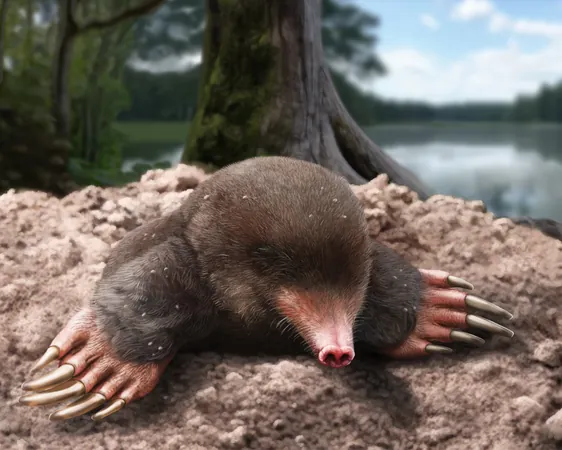
Discovering a New Ancient Mole: Meet Vulcanoscaptor ninoti!
2025-07-15
Author: Arjun
A Groundbreaking Paleontological Discovery
Exciting news from the world of paleontology! Researchers have unveiled a brand-new genus and species of mole, named **Vulcanoscaptor ninoti**, or "the Camp dels Ninots volcano digger." This remarkable find was made at the **Camp dels Ninots** site in Caldes de Malavella, Girona, one of Europe’s richest paleontological treasure troves dating back over **3.5 million years**.
An Expert Team Behind the Discovery
Led by researchers from the **Institut Català de Paleoecologia Humana i Evolució Social**, **Universitat Autònoma de Barcelona**, and the **Institut Català de Paleontologia Miquel Crusafont**, this team has brought to light a fossil so well-preserved that it stands as the most complete mole specimen ever discovered from Pliocene Europe. It includes a near-intact mandible, part of the torso, and several limb bones still connected anatomically.
A Surprising Evolutionary Twist
What’s particularly fascinating is the evolutionary connection revealed by the study: **Vulcanoscaptor ninoti** belongs to the **Scalopini** tribe, which today is primarily found in North America and parts of Asia. This unexpected discovery hints at ancient transcontinental migrations of moles, challenging the long-held belief that these small mammals have limited dispersal capabilities.
Dr. Marc Furió, a professor at Universitat Autònoma de Barcelona, stated, "This mole shares an intricate evolutionary history with contemporary North American species, suggesting a far more complex past than we had imagined!"
Advanced Technology in Action
The fossil’s incredible condition allowed researchers to use advanced **micro-computed tomography (microCT)** to create a detailed 3D digital reconstruction of the specimen. This technology uncovered tiny anatomical features that could have gone unnoticed otherwise, solidifying its place in the Scalopini family.
Could This Mole Swim?
Interestingly, while the fossil reveals strong adaptations for digging, it was also found in sediment that might suggest aquatic abilities. Adriana Linares, the lead researcher, noted that some modern moles are not just extraordinary diggers but also powerful swimmers. "Could this ancient mole have shared similar traits?" she wonders.
The Camp dels Ninots: A Paleontological Goldmine
Discovered during systematic excavations in 2010, the **Camp dels Ninots** site has been a focus of research since 2003 and was recognized as a **Cultural Asset of National Interest** in 2015. This unique location, positioned within a Pliocene maar volcano, has provided dazzling preservation conditions, making it a top fossil site in Europe.
The site doesn’t just house moles; it contains a vast assortment of vertebrate remains, including large mammals and even ancient plants and microorganisms. Dr. Gerard Campeny, co-director of the excavations, remarked, "This site allows us to piece together entire ecosystems from the Pliocene, making it an invaluable resource for understanding past lifeforms."
Revolutionizing Our Understanding of Moles
The discovery of **Vulcanoscaptor ninoti** is a game-changer, revealing that the evolutionary narrative of moles is far more dynamic than previously thought. The wealth of information gathered from such extraordinary fossil sites is crucial for documenting species that are rarely preserved, particularly smaller mammals. This groundbreaking find sheds light on a fascinating chapter in the natural history of our planet!


 Brasil (PT)
Brasil (PT)
 Canada (EN)
Canada (EN)
 Chile (ES)
Chile (ES)
 Česko (CS)
Česko (CS)
 대한민국 (KO)
대한민국 (KO)
 España (ES)
España (ES)
 France (FR)
France (FR)
 Hong Kong (EN)
Hong Kong (EN)
 Italia (IT)
Italia (IT)
 日本 (JA)
日本 (JA)
 Magyarország (HU)
Magyarország (HU)
 Norge (NO)
Norge (NO)
 Polska (PL)
Polska (PL)
 Schweiz (DE)
Schweiz (DE)
 Singapore (EN)
Singapore (EN)
 Sverige (SV)
Sverige (SV)
 Suomi (FI)
Suomi (FI)
 Türkiye (TR)
Türkiye (TR)
 الإمارات العربية المتحدة (AR)
الإمارات العربية المتحدة (AR)